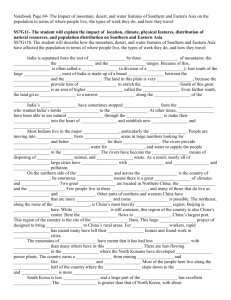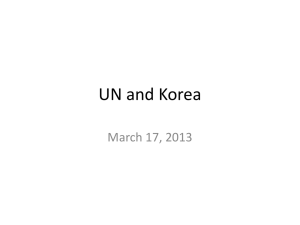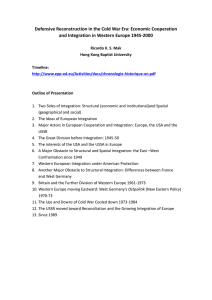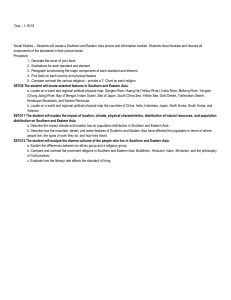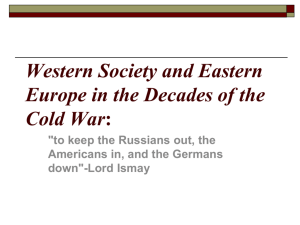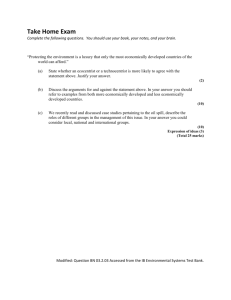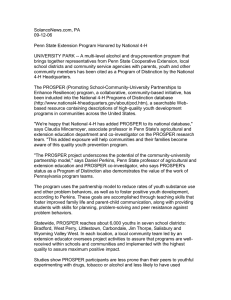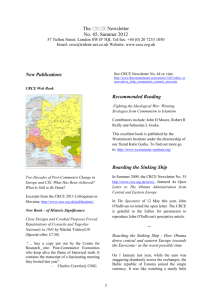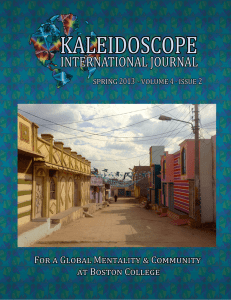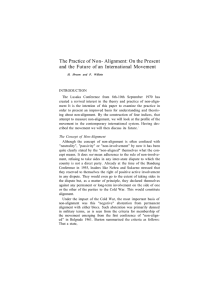Word
advertisement
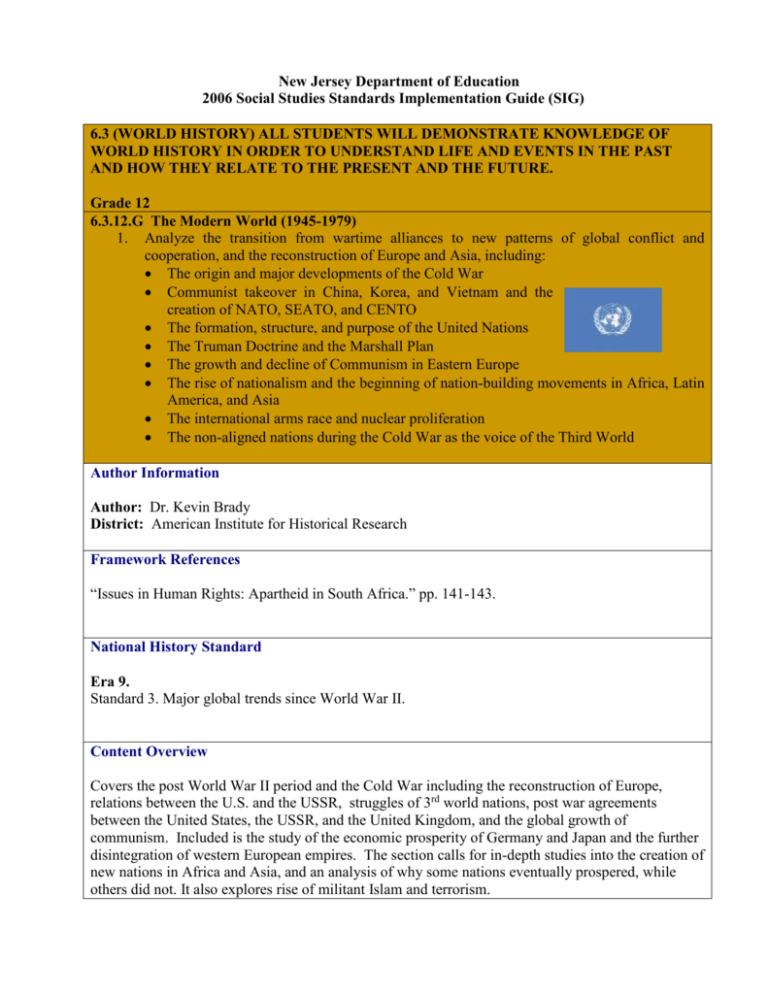
New Jersey Department of Education 2006 Social Studies Standards Implementation Guide (SIG) 6.3 (WORLD HISTORY) ALL STUDENTS WILL DEMONSTRATE KNOWLEDGE OF WORLD HISTORY IN ORDER TO UNDERSTAND LIFE AND EVENTS IN THE PAST AND HOW THEY RELATE TO THE PRESENT AND THE FUTURE. Grade 12 6.3.12.G The Modern World (1945-1979) 1. Analyze the transition from wartime alliances to new patterns of global conflict and cooperation, and the reconstruction of Europe and Asia, including: The origin and major developments of the Cold War Communist takeover in China, Korea, and Vietnam and the creation of NATO, SEATO, and CENTO The formation, structure, and purpose of the United Nations The Truman Doctrine and the Marshall Plan The growth and decline of Communism in Eastern Europe The rise of nationalism and the beginning of nation-building movements in Africa, Latin America, and Asia The international arms race and nuclear proliferation The non-aligned nations during the Cold War as the voice of the Third World Author Information Author: Dr. Kevin Brady District: American Institute for Historical Research Framework References “Issues in Human Rights: Apartheid in South Africa.” pp. 141-143. National History Standard Era 9. Standard 3. Major global trends since World War II. Content Overview Covers the post World War II period and the Cold War including the reconstruction of Europe, relations between the U.S. and the USSR, struggles of 3rd world nations, post war agreements between the United States, the USSR, and the United Kingdom, and the global growth of communism. Included is the study of the economic prosperity of Germany and Japan and the further disintegration of western European empires. The section calls for in-depth studies into the creation of new nations in Africa and Asia, and an analysis of why some nations eventually prospered, while others did not. It also explores rise of militant Islam and terrorism. Essential Questions 1. What Soviet actions caused the United States to remobilize its military in Europe after World War II and then create NATO? 2. Why did those nations that were allied with the United States after World War II, like the U.K. France, Italy, West Germany, Japan, South Korea, rebuild and prosper, while those in the Eastern Bloc, like East Germany, Poland, China, and North Korea languish so far behind economically? 3. After experiencing a devastating loss during World War II, which included two atomic bomb blasts, how was Japan able to rebuild its economy and become the second largest economy in the world, without possessing many natural resources or foreign colonies and with an extremely high population density? 4. Why did some African nations prosper, while others failed economically after independence during the 1960s? 5. How did eastern and southeastern Asian nations that were far behind Africa economically during the 1960s, rise to become regional economic powers by the 1990s? 6. How was the Soviet Union able to effectively use non-aligned nations to expand its influence and hegemony in much of Africa, and in portions of Asia, during the late 1970s? 7. How did Chinese Communist Chairman Mao Zedong justify the Cultural Revolution in pursuit of an ideal socialist state that resulted in the death of tens of millions of his fellow countrymen? Teaching Resources http://www.euratlas.com/summary.htm: This site has a vast array of historical maps for European history studies. Beschloss, Michael, Our Documents, 2003. The official U.S. government collection of American historical documents for use in schools. Assessment As a member of a U.S. Advisory Group appointed by the President of the United States, you are to submit a report assessing the status of human rights for all citizens in the United States. Your report should include references to authoritative assessments such as those of the United Nations Commission on Human Rights (http://www.unhchr.ch/html/menu2/2/chr.htm) and Amnesty International (www.amnesty.org). Students work in small groups to research such issues of human rights as arbitrary detention right to highest attainable physical and mental health protection of persons right to education adequate housing protection of the right to freedom of expression Teacher and/or student (with teacher input) developed rubric for scoring reports should focus on clarity of expressions, clear thinking, sound use of data, validity of arguments, and conclusions. If information is to be presented to the class include criteria for presentation and multi-media use. The teacher should prepare a detailed rubric to evaluate the written work. Focus on accuracy and completeness, and soundness of judgments and conclusions.

